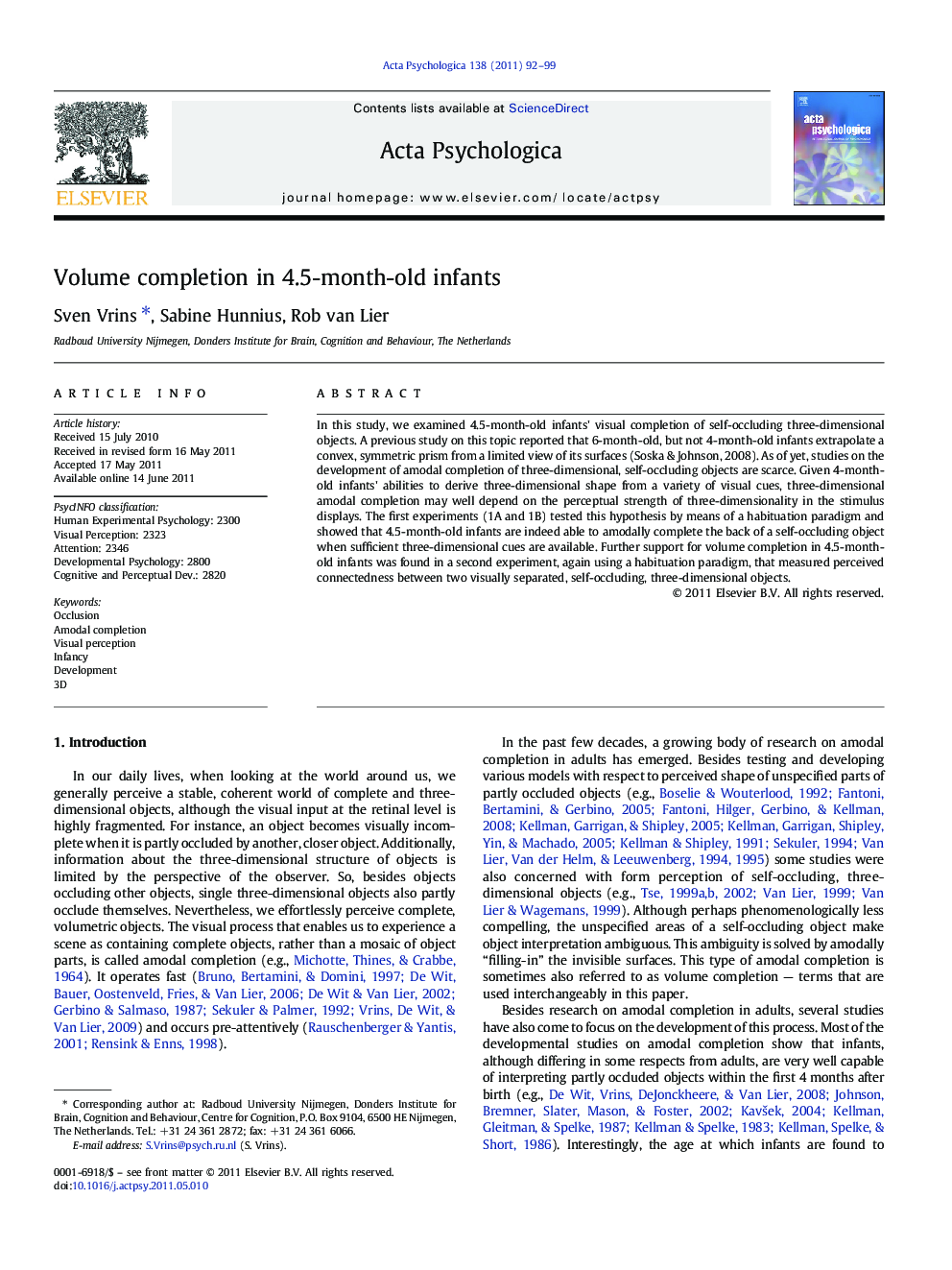| Article ID | Journal | Published Year | Pages | File Type |
|---|---|---|---|---|
| 920175 | Acta Psychologica | 2011 | 8 Pages |
In this study, we examined 4.5-month-old infants' visual completion of self-occluding three-dimensional objects. A previous study on this topic reported that 6-month-old, but not 4-month-old infants extrapolate a convex, symmetric prism from a limited view of its surfaces (Soska & Johnson, 2008). As of yet, studies on the development of amodal completion of three-dimensional, self-occluding objects are scarce. Given 4-month-old infants' abilities to derive three-dimensional shape from a variety of visual cues, three-dimensional amodal completion may well depend on the perceptual strength of three-dimensionality in the stimulus displays. The first experiments (1A and 1B) tested this hypothesis by means of a habituation paradigm and showed that 4.5-month-old infants are indeed able to amodally complete the back of a self-occluding object when sufficient three-dimensional cues are available. Further support for volume completion in 4.5-month-old infants was found in a second experiment, again using a habituation paradigm, that measured perceived connectedness between two visually separated, self-occluding, three-dimensional objects.
Research highlights► 4.5-month-old infants can amodally complete self-occluding 3D objects. ► Volume completion in young infants is facilitated by sufficient depth-cues. ► Volume completion in young infants occurs in absence of contour or surface relatability.
